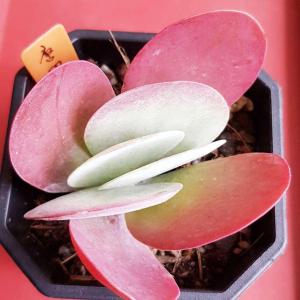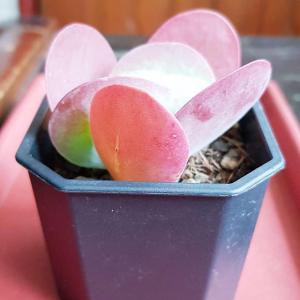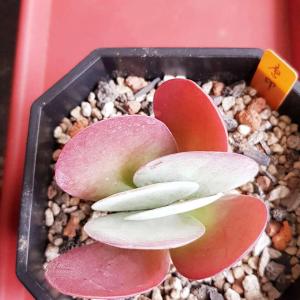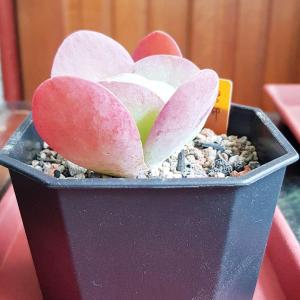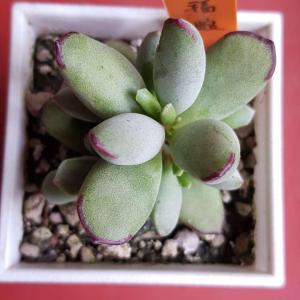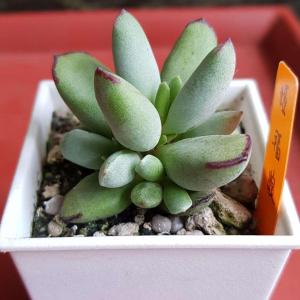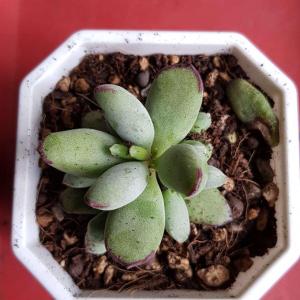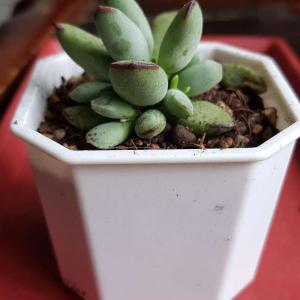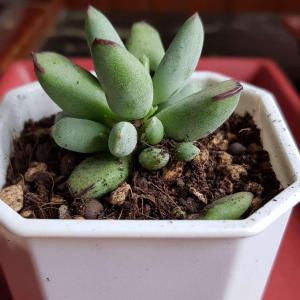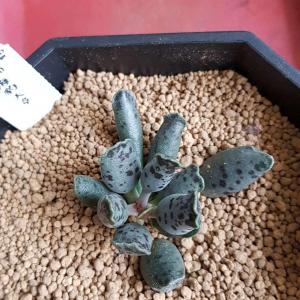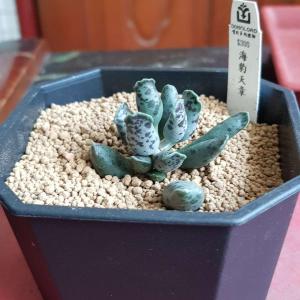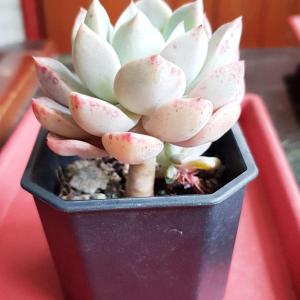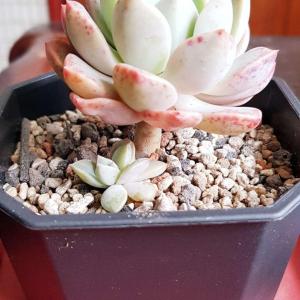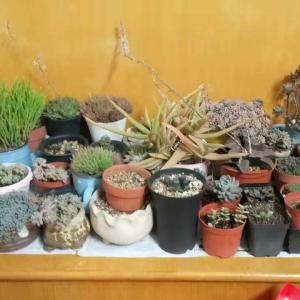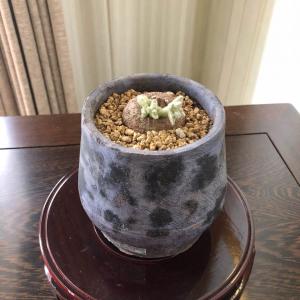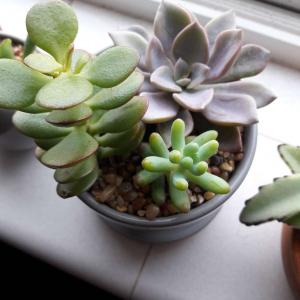文章
Miss Chen
2018年04月01日

Description: This woody shrub is 2-8' tall. Depending on the variety, it is variable in size and branching habit. Fragrant Sumac can be an erect shrub with ascending branches, or it can be a low shrub with spreading branches. The trunk and lower branches are greyish brown and woody, while the upper branches are more or less pubescent. The alternate leaves are trifoliate. The individual leaflets are up to 3" long and 1½" across, although they are often half this size. The terminal leaflet is somewhat larger than the lateral leaflets. They are elliptic, oval-ovate, oblanceolate, or obovate in shape, coarsely crenate or shallowly cleft along their margins, and green, yellowish green, or red. The upper surface of each leaflet is glabrous to finely pubescent (canescent), while the lower surface is sparsely pubescent to softly hairy. Each leaflet is sessile, or it has a short petiole. The crushed foliage has a pleasant bittersweet fragrance. Occasionally, short spikes of flowers or panicles of floral spikes are produced from the axils of the leaves. These flowers can appear before or during the early development of the leaves. Each floral spike is up to 1" long. The individual flowers are greenish yellow, short-tubular in shape, and about 1/8" long; they can be perfect or unisexual (male or female).

The blooming period occurs during the spring. During the summer, the flowers are replaced by hairy red drupes. Each drupe is up to ¼" across and globoid-ovoid in shape; it contains a single stone (seed with a hard coat). The root system consists of a woody branching taproot.
Cultivation: The preference is full or partial sun, dry conditions, and soil that is sandy or rocky. However, this shrub will adapt to mesic conditions with fertile loamy soil if there is not too much competition from other species of plants.
Range & Habitat: The native Aromatic Sumac is occasional in parts of southern, western, and northern Illinois; it is uncommon or absent from east central Illinois (see Distribution Map). This map combines the distribution of the different varieties of Aromatic Sumac. Aromatic Sumac is more tree-like and erect in southern Illinois, but a low spreading shrub elsewhere in the state. Habitats include thinly wooded bluffs, upland rocky woods, barren rocky areas, limestone glades, sandy savannas, sand prairies, and sand dunes. Aromatic Sumac is often cultivated as an ornamental shrub in yards or along buildings and city streets.
Faunal Associations: The nectar and/or pollen of the flowers attract small bees (especially Halictid & Andrenid bees), Syrphid flies, and a variety of other flies. Small Carpenter bees (Ceratina spp.) create tunnel-nests in the pith of sumac stems. The adults and larvae of Blepharida rhois (Sumac Flea Beetle) feed on the foliage of Aromatic Sumac and other species of sumac (Rhus spp.). Other insects that reportedly feed on sumac include larvae of Oberea ocellata (Sumac Stem Borer), Melaphis rhois (Sumac Gall Aphid), larvae of Asphondylia integrifoliae (Sumac Flowerbud Gall Midge), and the caterpillars of several moths and butterflies (see Moth & Butterfly Table). The hairy red drupes of sumac are largely used as emergency food by birds during the winter or when little else is available. Nonetheless, a large number of bird species have been observed eating these drupes (see Bird Table for a listing of these species). The White-Tailed Deer browses on the woody stems and leaves, while the Cottontail Rabbit gnaws on the bark of sumac during the winter.

Photographic Location: The floral spikes were photographed along a city street in Champaign, Illinois. The trifoliate leaves and hairy red drupes were photographed on a stabilized sand dune near Lake Michigan at the Indiana Dunes State Park in NW Indiana.
Comments: Fragrant Sumac is smaller and less aggressive than Rhus glabra (Smooth Sumac) and Rhus typhina (Staghorn Sumac). The flowers of Fragrant Sumac bloom earlier in the spring and its drupes ripen earlier in the summer than these other species. Its compound leaves are trifoliate, while the odd-pinnate leaves of other Sumacs in Illinois have many more leaflets than this. These other Sumacs also lack the aromatic foliage of Fragrant Sumac.

The blooming period occurs during the spring. During the summer, the flowers are replaced by hairy red drupes. Each drupe is up to ¼" across and globoid-ovoid in shape; it contains a single stone (seed with a hard coat). The root system consists of a woody branching taproot.
Cultivation: The preference is full or partial sun, dry conditions, and soil that is sandy or rocky. However, this shrub will adapt to mesic conditions with fertile loamy soil if there is not too much competition from other species of plants.
Range & Habitat: The native Aromatic Sumac is occasional in parts of southern, western, and northern Illinois; it is uncommon or absent from east central Illinois (see Distribution Map). This map combines the distribution of the different varieties of Aromatic Sumac. Aromatic Sumac is more tree-like and erect in southern Illinois, but a low spreading shrub elsewhere in the state. Habitats include thinly wooded bluffs, upland rocky woods, barren rocky areas, limestone glades, sandy savannas, sand prairies, and sand dunes. Aromatic Sumac is often cultivated as an ornamental shrub in yards or along buildings and city streets.
Faunal Associations: The nectar and/or pollen of the flowers attract small bees (especially Halictid & Andrenid bees), Syrphid flies, and a variety of other flies. Small Carpenter bees (Ceratina spp.) create tunnel-nests in the pith of sumac stems. The adults and larvae of Blepharida rhois (Sumac Flea Beetle) feed on the foliage of Aromatic Sumac and other species of sumac (Rhus spp.). Other insects that reportedly feed on sumac include larvae of Oberea ocellata (Sumac Stem Borer), Melaphis rhois (Sumac Gall Aphid), larvae of Asphondylia integrifoliae (Sumac Flowerbud Gall Midge), and the caterpillars of several moths and butterflies (see Moth & Butterfly Table). The hairy red drupes of sumac are largely used as emergency food by birds during the winter or when little else is available. Nonetheless, a large number of bird species have been observed eating these drupes (see Bird Table for a listing of these species). The White-Tailed Deer browses on the woody stems and leaves, while the Cottontail Rabbit gnaws on the bark of sumac during the winter.

Photographic Location: The floral spikes were photographed along a city street in Champaign, Illinois. The trifoliate leaves and hairy red drupes were photographed on a stabilized sand dune near Lake Michigan at the Indiana Dunes State Park in NW Indiana.
Comments: Fragrant Sumac is smaller and less aggressive than Rhus glabra (Smooth Sumac) and Rhus typhina (Staghorn Sumac). The flowers of Fragrant Sumac bloom earlier in the spring and its drupes ripen earlier in the summer than these other species. Its compound leaves are trifoliate, while the odd-pinnate leaves of other Sumacs in Illinois have many more leaflets than this. These other Sumacs also lack the aromatic foliage of Fragrant Sumac.
0
0
文章
Miss Chen
2018年03月31日

Description: This herbaceous perennial plant is 2-4' tall and usually unbranched, except near the apex where the flowers occur. The central stem is light green, round, and usually hairless. Sometimes fine purple streaks occur along the stem. The opposite leaves are up to 6" long and 1" across. They are narrowly ovate or ovate-oblong, with smooth margins and conspicuous pinnate and secondary venation. The margins are slightly ciliate, otherwise the leaves are hairless. The lower leaves have short petioles, while some of the upper leaves may be sessile and rounded at the base.
The central stem and a few secondary stems near the apex of the plant terminate in rather flat-headed or gently rounded panicles of flowers. These flowering stems (peduncles) are often finely pubescent. The individual flowers are about 1" long and ½–¾" across, and can occur in a variety of colors, including bright rosy pink, lavender, and white. Each flower has a long tubular corolla with 5 spreading petals that are well-rounded and overlap slightly. The tubular calyx is green (sometimes with purplish tints) and much smaller than the corolla. The teeth of this calyx are long and narrow. Sometimes the calyx is pubescent or hairy. The blooming period occurs from mid- to late summer and lasts about 1½ months. The flowers are quite fragrant. The small seed capsules have 3-cells and are oval in shape. Each cell usually contains 2 small seeds. The root system consists of a taproot. Small clumps of plants are often formed.
Cultivation: The preference is partial sun, moist conditions, and fertile loamy soil. Light shade is tolerated, but flowers will be produced less abundantly. In full sun, the leaves have a tendency to turn yellowish green and the plants are in greater danger of drying out. Sometimes the leaves are attacked by various kinds of foliar disease, such as powdery mildew. This appears to occur less often among plants growing in the wild than among the cultivated strains that are typically grown in flower gardens.

Range & Habitat: The native Summer Phlox has been observed in most counties of Illinois, except in the NW where it is often absent (see Distribution Map). While this plant is widely distributed here and there, it is rather uncommon in natural habitats, occurring as isolated clumps of plants. Some populations are undoubtedly derived from cultivated forms of the plant that have escaped. Habitats include openings in moist to mesic woodlands, woodland borders, thickets, and semi-shaded areas along rivers. Because of the attractive flowers, Summer Phlox is quite common in flower gardens.
Faunal Associations: The nectar of the flowers attracts butterflies, skippers, and moths, including Hummingbird moths and Sphinx moths. Other insects don't have long enough mouthparts to extract the nectar from the base of the corolla. Small flower flies may feed on the pollen, but are not effective pollinators. Some insects suck juices from Phlox spp., including Lopidea davisi (Phlox Scarlet Plant Bug) and Poecilocapsus lineatus (Four-Lined Plant Bug), while the adults of Epicauta pensylvanica (Black Blister Beetle) eat the flowers or foliage. The caterpillars of some moth species feed on the foliage or flowers as well, including Lacinipolia olivacea (Olive Arches) and Heliothis phloxiphagus (Spotted Straw). Mammalian herbivores occasionally eat the foliage of this and other Phlox spp., including deer, rabbits, and livestock.

Photographic Location: A moist woodland edge at Meadowbrook Park in Urbana, Illinois.
Comments: Summer Phlox is the largest of the Phlox spp. in Illinois. This plant is easy to identify because of its leaves, which have conspicuous secondary veins on their upper surface. In other Phlox spp., only the central vein is prominent. A mature specimen of Summer Phlox will have some leaves that easily exceed ½" in width, while the leaves of other Phlox spp. are less than ½" in width. Summer Phlox usually blooms later than other species in this genus, although its blooming period may overlap with Phlox glaberrima (Smooth Phlox) to a limited extent. Another common name for Phlox paniculata is Garden Phlox.
The central stem and a few secondary stems near the apex of the plant terminate in rather flat-headed or gently rounded panicles of flowers. These flowering stems (peduncles) are often finely pubescent. The individual flowers are about 1" long and ½–¾" across, and can occur in a variety of colors, including bright rosy pink, lavender, and white. Each flower has a long tubular corolla with 5 spreading petals that are well-rounded and overlap slightly. The tubular calyx is green (sometimes with purplish tints) and much smaller than the corolla. The teeth of this calyx are long and narrow. Sometimes the calyx is pubescent or hairy. The blooming period occurs from mid- to late summer and lasts about 1½ months. The flowers are quite fragrant. The small seed capsules have 3-cells and are oval in shape. Each cell usually contains 2 small seeds. The root system consists of a taproot. Small clumps of plants are often formed.
Cultivation: The preference is partial sun, moist conditions, and fertile loamy soil. Light shade is tolerated, but flowers will be produced less abundantly. In full sun, the leaves have a tendency to turn yellowish green and the plants are in greater danger of drying out. Sometimes the leaves are attacked by various kinds of foliar disease, such as powdery mildew. This appears to occur less often among plants growing in the wild than among the cultivated strains that are typically grown in flower gardens.

Range & Habitat: The native Summer Phlox has been observed in most counties of Illinois, except in the NW where it is often absent (see Distribution Map). While this plant is widely distributed here and there, it is rather uncommon in natural habitats, occurring as isolated clumps of plants. Some populations are undoubtedly derived from cultivated forms of the plant that have escaped. Habitats include openings in moist to mesic woodlands, woodland borders, thickets, and semi-shaded areas along rivers. Because of the attractive flowers, Summer Phlox is quite common in flower gardens.
Faunal Associations: The nectar of the flowers attracts butterflies, skippers, and moths, including Hummingbird moths and Sphinx moths. Other insects don't have long enough mouthparts to extract the nectar from the base of the corolla. Small flower flies may feed on the pollen, but are not effective pollinators. Some insects suck juices from Phlox spp., including Lopidea davisi (Phlox Scarlet Plant Bug) and Poecilocapsus lineatus (Four-Lined Plant Bug), while the adults of Epicauta pensylvanica (Black Blister Beetle) eat the flowers or foliage. The caterpillars of some moth species feed on the foliage or flowers as well, including Lacinipolia olivacea (Olive Arches) and Heliothis phloxiphagus (Spotted Straw). Mammalian herbivores occasionally eat the foliage of this and other Phlox spp., including deer, rabbits, and livestock.

Photographic Location: A moist woodland edge at Meadowbrook Park in Urbana, Illinois.
Comments: Summer Phlox is the largest of the Phlox spp. in Illinois. This plant is easy to identify because of its leaves, which have conspicuous secondary veins on their upper surface. In other Phlox spp., only the central vein is prominent. A mature specimen of Summer Phlox will have some leaves that easily exceed ½" in width, while the leaves of other Phlox spp. are less than ½" in width. Summer Phlox usually blooms later than other species in this genus, although its blooming period may overlap with Phlox glaberrima (Smooth Phlox) to a limited extent. Another common name for Phlox paniculata is Garden Phlox.
0
0
文章
Miss Chen
2018年03月31日

Description: This herbaceous perennial plant is about 1-3' tall and unbranched, except for a few flowering stems near the apex. The central stem may have fine white hairs, otherwise it is glabrous. The opposite leaves are up to 5" long and 2" across, becoming smaller as they ascend the stem. They are yellowish green to medium-dark green, ovate to lanceolate-oblong, devoid of hairs, and have widely spaced teeth along their margins. The leaves are sessile or they clasp the stem; sometimes they are slightly cordate at the base.

An elongated panicle of flowers occurs at the apex of the central stem, and smaller panicles of flowers may occur on upper side stems. The stems of each inflorescence (peduncles and pedicels) are usually covered with fine white hairs. Each tubular flower is about 1" long, with 2 upper lobes and 3 lower lobes; the lower lobes do not project outward any further than the upper lobes. On the outer surface, the corolla is light violet or purple and covered with fine hairs, while the inner surface is white. The lower inner surface of the corolla is smooth and lacks ridges. The anthers and style are inserted within the corolla. The calyx of this penstemon is divided into rather long linear-lanceolate segments that are about 1/3" (8 mm.) long. The blooming period occurs during late spring or early summer and lasts about a month. There is no floral scent. The flowers are replaced by small capsules containing numerous seeds. These small seeds can be carried several feet by gusts of wind. The root system consists of a taproot. The flowering stalk dies down after the blooming period, although it is replaced by low basal leaves that persist until the spring of the following year.
Cultivation: The preference is full to partial sun, rich loamy soil, and moist to mesic conditions. Like other penstemons, this species rarely has problems with foliar disease.
Close-up of Leaf
Range & Habitat: The native Long-Sepal Penstemon occurs occasionally in eastern and southern Illinois, but it is rare or absent in northwestern areas of the state (see Distribution Map). Habitats include open rocky woodlands, woodland borders, oak savannas, moist meadows within woodlands, pastures, black soil prairies, and edges of old cemeteries. This species appears in both high quality habitats and more disturbed areas.
Faunal Associations: Long-tongued bees are the most important pollinators of the flowers, including honeybees, bumblebees, Anthophorine bees, digger bees, mason bees, and leaf-cutting bees, which seek nectar primarily. Less important visitors include Halictid bees, Sphinx moths, and hummingbirds. The caterpillars of the moth Elaphria chalcedonia (Chalcedony Midget) may feed on the foliage of this penstemon. The foliage of penstemons is not a preferred food source for most mammalian herbivores.
Photographic Location: The photograph of the flowers was taken at Prospect Cemetery Prairie in Ford County, Illinois, while the photograph of the leaf was taken in Vermilion County, Illinois, at the edge of an old cemetery in a wooded area.
Comments: This species has reasonably attractive flowers, and it should be cultivated in wildflower gardens more often. Long-Sepal Penstemon resembles Penstemon digitalis (Foxglove Penstemon) somewhat, but it is usually a little smaller and has light violet or purple flowers, while Foxglove Penstemon has white flowers that are at most tinged with violet. Long-Sepal Penstemon also has longer sepals. Another native penstemon, Penstemon hirsutus (Hairy Penstemon), also has pinkish flowers, but the corolla of its flowers is more constricted at the mouth and its stems are more hairy. Other features to consider while identifying a penstemon species include the presence or absence of ridges on the lower inner surface of the corolla, the presence or absence of hairs on the leaves, and whether or not the lower lip of the corolla extends further forward than the upper lip.

An elongated panicle of flowers occurs at the apex of the central stem, and smaller panicles of flowers may occur on upper side stems. The stems of each inflorescence (peduncles and pedicels) are usually covered with fine white hairs. Each tubular flower is about 1" long, with 2 upper lobes and 3 lower lobes; the lower lobes do not project outward any further than the upper lobes. On the outer surface, the corolla is light violet or purple and covered with fine hairs, while the inner surface is white. The lower inner surface of the corolla is smooth and lacks ridges. The anthers and style are inserted within the corolla. The calyx of this penstemon is divided into rather long linear-lanceolate segments that are about 1/3" (8 mm.) long. The blooming period occurs during late spring or early summer and lasts about a month. There is no floral scent. The flowers are replaced by small capsules containing numerous seeds. These small seeds can be carried several feet by gusts of wind. The root system consists of a taproot. The flowering stalk dies down after the blooming period, although it is replaced by low basal leaves that persist until the spring of the following year.
Cultivation: The preference is full to partial sun, rich loamy soil, and moist to mesic conditions. Like other penstemons, this species rarely has problems with foliar disease.
Close-up of Leaf
Range & Habitat: The native Long-Sepal Penstemon occurs occasionally in eastern and southern Illinois, but it is rare or absent in northwestern areas of the state (see Distribution Map). Habitats include open rocky woodlands, woodland borders, oak savannas, moist meadows within woodlands, pastures, black soil prairies, and edges of old cemeteries. This species appears in both high quality habitats and more disturbed areas.
Faunal Associations: Long-tongued bees are the most important pollinators of the flowers, including honeybees, bumblebees, Anthophorine bees, digger bees, mason bees, and leaf-cutting bees, which seek nectar primarily. Less important visitors include Halictid bees, Sphinx moths, and hummingbirds. The caterpillars of the moth Elaphria chalcedonia (Chalcedony Midget) may feed on the foliage of this penstemon. The foliage of penstemons is not a preferred food source for most mammalian herbivores.
Photographic Location: The photograph of the flowers was taken at Prospect Cemetery Prairie in Ford County, Illinois, while the photograph of the leaf was taken in Vermilion County, Illinois, at the edge of an old cemetery in a wooded area.
Comments: This species has reasonably attractive flowers, and it should be cultivated in wildflower gardens more often. Long-Sepal Penstemon resembles Penstemon digitalis (Foxglove Penstemon) somewhat, but it is usually a little smaller and has light violet or purple flowers, while Foxglove Penstemon has white flowers that are at most tinged with violet. Long-Sepal Penstemon also has longer sepals. Another native penstemon, Penstemon hirsutus (Hairy Penstemon), also has pinkish flowers, but the corolla of its flowers is more constricted at the mouth and its stems are more hairy. Other features to consider while identifying a penstemon species include the presence or absence of ridges on the lower inner surface of the corolla, the presence or absence of hairs on the leaves, and whether or not the lower lip of the corolla extends further forward than the upper lip.
0
0
文章
Miss Chen
2018年03月31日

Description: This perennial wildflower consists of a rosette of basal leaves spanning ½-1' across and a more or less erect flowering stalk about ¾-2' tall. The basal leaves are 3-6" long (including the petioles). The leaf blades are oval, obovate, or orbicular in shape with dentate-crenate margins; they are medium green and glabrous. The petioles are light green to dull purple and as long as the blades; sometimes they are slightly winged and/or cobwebby-pubescent. The flowering stalk is light green to dull purple and terete; it may have some cobwebby pubescence toward the base, otherwise it is glabrous. About 2-3 alternate leaves occur along the stalk that are up ¾-2½" long; they are usually elliptic-pinnatifid or oblong-pinnatifid in shape with ragged lobes. The stalk terminates in a flat-headed panicle (or compound corymb) of flowerheads. Individual flowerheads are ½-¾" across. Each flowerhead has 8-16 ray florets that surround numerous disk florets in the center. The petaloid extensions of the ray florets are yellow, while the disk florets are orange-yellow. At the base of each flowerhead, there are light green bracts (phyllaries) in a single series that are linear-lanceolate. The blooming period occurs during late spring and lasts about 3 weeks. During the summer, both ray and disk florets are replaced by bullet-shaped achenes (about 2-3 mm. in length) with tufts of white hair. The achenes are distributed by the wind. The root system is fibrous, producing vegetative offsets from either rhizomes or stolons. At favorable sites, small colonies of plants occasionally develop.

Cultivation: The preference is moist to dry-mesic conditions, full to partial sunlight, and soil containing loam, sand, or rocky material.
Range & Habitat: The native Spoon-Leaved Ragwort is found in east-central Illinois and scattered areas elsewhere within the state, where it is rare (see Distribution Map). Illinois lies along the western range-limit for this species; it is more common further to the east. Habitats include rocky upland woodlands, edges of bluffs, limestone glades, loamy savannas, and sandy savannas. Occasional disturbance is beneficial if it reduces competition from woody vegetation.
Faunal Associations: The nectar and pollen of the flowerheads attract cuckoo bees (Nomada spp.), Halictid bees (Augochlorella spp., Halictus spp., Lasioglossum spp.), Andrenid bees (Andrena spp.), Syrphid flies, Tachinid flies, and miscellaneous beetles. One bee species, Andrena gardineri, is a specialist pollinator (oligolege) of Packera spp. (ragworts). Another insect, Neacoryphus bicrucis (White-Crossed Seed Bug), feeds on the seeds of these plants, while the caterpillars of an uncommon butterfly, Calephelis borealis (Northern Metalmark), feed on the foliage of Spoon-Leaved Ragwort in particular. The foliage of this and other ragworts is toxic to many mammalian herbivores, although sheep are more tolerant of it (Georgia, 1913).
Photographic Location: A wildflower garden at Kitty Todd Nature Preserve in NW Ohio.
Comments: The different species of ragwort are distinguished from each other by the shape of their basal leaves and hairiness of individual plants. Spoon-Leaved Ragwort (Packera obovata) resembles Golden Ragwort (Packera aurea), except its leaves are not indented (cordate) where the petioles join the blades. It is also more likely to have narrowly winged petioles than the latter species. Spoon-Leaved Ragwort also resembles Prairie Ragwort (Packera plattensis), except it lacks the abundant cobwebby and mealy hairs of the latter during the blooming period. Spoon-Leaved Ragwort often has some cobwebby hairs toward the base of its stems and along its petioles, but not to the same extent as Prairie Ragwort. In addition, plants of the latter species are usually smaller in size. A scientific synonym of Spoon-leaved Ragwort is Senecio obovatus.

Cultivation: The preference is moist to dry-mesic conditions, full to partial sunlight, and soil containing loam, sand, or rocky material.
Range & Habitat: The native Spoon-Leaved Ragwort is found in east-central Illinois and scattered areas elsewhere within the state, where it is rare (see Distribution Map). Illinois lies along the western range-limit for this species; it is more common further to the east. Habitats include rocky upland woodlands, edges of bluffs, limestone glades, loamy savannas, and sandy savannas. Occasional disturbance is beneficial if it reduces competition from woody vegetation.
Faunal Associations: The nectar and pollen of the flowerheads attract cuckoo bees (Nomada spp.), Halictid bees (Augochlorella spp., Halictus spp., Lasioglossum spp.), Andrenid bees (Andrena spp.), Syrphid flies, Tachinid flies, and miscellaneous beetles. One bee species, Andrena gardineri, is a specialist pollinator (oligolege) of Packera spp. (ragworts). Another insect, Neacoryphus bicrucis (White-Crossed Seed Bug), feeds on the seeds of these plants, while the caterpillars of an uncommon butterfly, Calephelis borealis (Northern Metalmark), feed on the foliage of Spoon-Leaved Ragwort in particular. The foliage of this and other ragworts is toxic to many mammalian herbivores, although sheep are more tolerant of it (Georgia, 1913).
Photographic Location: A wildflower garden at Kitty Todd Nature Preserve in NW Ohio.
Comments: The different species of ragwort are distinguished from each other by the shape of their basal leaves and hairiness of individual plants. Spoon-Leaved Ragwort (Packera obovata) resembles Golden Ragwort (Packera aurea), except its leaves are not indented (cordate) where the petioles join the blades. It is also more likely to have narrowly winged petioles than the latter species. Spoon-Leaved Ragwort also resembles Prairie Ragwort (Packera plattensis), except it lacks the abundant cobwebby and mealy hairs of the latter during the blooming period. Spoon-Leaved Ragwort often has some cobwebby hairs toward the base of its stems and along its petioles, but not to the same extent as Prairie Ragwort. In addition, plants of the latter species are usually smaller in size. A scientific synonym of Spoon-leaved Ragwort is Senecio obovatus.
0
0



